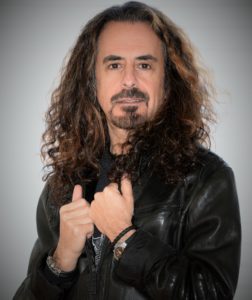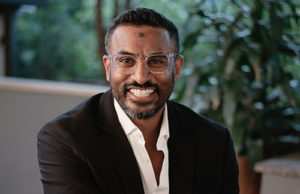March 15, 2021
By Gary Gerber, OD, and Anil Idiculla, DMD
“When we compare OrthoK to braces, we are further distancing ourselves from myopia management’s benefit of preventing sight-threatening pathologies later in life.”
Optometrists often tell parents, “Orthokeratology contact lenses are like braces for your daughter’s eyes. She’ll wear them at night, take them off in the morning, and be able to see all day without other contact lenses or glasses.”
At first blush, that may seem like a reasonably parent-friendly analogy because both OrthoK lenses and dental braces move tissue. However, while it may be a commonly used analogy, it’s a poor one that will not help move myopia management, a still nascent yet important discipline, forward.
Our consumer research indicates while parents might understand the analogy of OrthoK specifically to braces if it’s not expanded upon, it is one of the worst analogies you can use for myopia management. This is because one of the most common mistakes optometrists use is to conflate OrthoK with myopia management. The two are not synonymous, and equating OrthoK to orthodontia helps to propagate that confusion for consumers.
What’s in Your Toolbox?
Not all orthodontic treatment is the same. There are braces on the front of the teeth, braces behind the teeth, clear or ceramic braces, and clear aligners, yet all of these can achieve the desired clinical result.
Similarly, equating myopia management to OrthoK limits the kids you’ll end up treating, let alone totally miss what myopia management really is. OrthoK is often presented as a way to provide patients “uncorrected vision during the day.” While it does so, that is not the core clinical reason it works for myopia management. Myopia management is not about providing sharp uncorrected acuity. It is about slowing axial elongation.
Similarly, orthodontic braces aren’t solely for cosmetic reasons. They are for functional reasons such as achieving the proper bite and occlusal relationships. Sadly, I’d venture to say most practices fitting OrthoK lenses only for “myopia management” aren’t even measuring axial length.
Additionally, when we compare OrthoK to braces, we are further distancing ourselves from myopia management’s benefit of preventing sight-threatening pathologies later in life. When dental braces are finally removed at the end of a patient’s treatment, they are left with an obvious visible cosmetic benefit. When myopia management with OrthoK lenses ends, the benefit is far less visible. A myopia management patient who completes treatment will not have anyone complimenting on how great they look without their contact lenses (and rarely their new glasses), and they will never have anyone compliment them on their stable 23.72 mm axial length.
Related to the depth of the toolbox is the question about whether myopia management is a specialty or under the purview of any primary eye care practitioner. The similarity here is striking as there are primary care “general” dentists who can incorporate orthodontics into their general practice, but they will seldom master it. They might end up treating one patient with braces at 10 a.m., sandwiched between performing a root canal and delivering a crown. This is why dentistry has specialists and why patient care is elevated by seeing them for their unique skills. Just as with optometrists who dabble in myopia care, their patients rarely receive the best possible care.
How Many Patients Need Help?
A similarity between myopia management and orthodontia is in the size of the patient base needing help. In the United States, there are already about 15 million myopic kids who could benefit from myopia management care. That represents about 30 percent of kids. However, industry estimates are that only about 1 to 2 percent of those kids have actually been treated. Over 90 percent of kids in the U.S. could benefit from braces, and currently more than 60 percent of those have received them.
Why is there such a big difference between the percentage of kids needing braces and those who are treated? After all, while no one would argue or even try to stratify the importance of teeth vs. eyes, no one would say that vision is unimportant.
The big reason is consumer (in this case parent) awareness. Simply, parents know what braces are, what they are expected to do, and what they are likely to cost. Conversely, most parents don’t know what “myopia” is, let alone its serious consequences and ability to be treated.
Lack of Acceptance is Not About Fees!
Fees are another interesting avenue to explore. ODs having challenges getting their myopia management practices off the ground often lament that they have trouble with parents’ willingness to pay what the doctor believes is a reasonable fee for the expertise and services rendered.
The average fee for orthodontic care in the U.S. is about $4,500. Compare that to the average fee for myopia management of about $2,000, and it’s evident that the lack of acceptance of myopia management isn’t about fees.
Another noticeable difference in fees is how they are presented. Orthodontia is usually presented as a global all-inclusive fee for a defined period. “It will cost $5,000 for two years of care” is about as complicated as a fee presentation gets. Many in-office financing options might be presented, but it is centrally built around one total fee.
Contrast this with how a myopia management case is often presented, “Your initial exam today is $147. The consultation for myopia management will be $225. If you move forward with treatment for atropine, the drops will be $45 per month, and each time you return for a visit, it will be $50. If you decide to get soft multifocal contact lenses, the professional fee is $500 each year, and the contact lenses will be $1,200. If you lose a lens…”
Beyond the obvious parental awareness differential, it’s no wonder that a higher percentage of parents move forward with orthodontic treatment than with myopia management care. Optometrists often present fees in such a complicated way that parents require a degree in calculus to understand!
Lots of kids need myopia management, and lots of kids need braces. The two treatments are clinically different, yet there are several things we can learn from our dental colleagues.

Gary Gerber, OD
Gary Gerber, OD, is the co-founder of Treehouse Eyes, the country’s first and only company dedicated exclusively to providing expert myopia care for kids.

Anil Idiculla, DMD
Anil Idiculla, DMD, is the founder of i-Orthodontics, a multi-location orthodontics practice located in Denver, Colo., and surrounding areas. He has written and lectured extensively on clinical and practice management topics surrounding his dental specialty, and he has spent a lot of time understanding OrthoK and myopia management.














